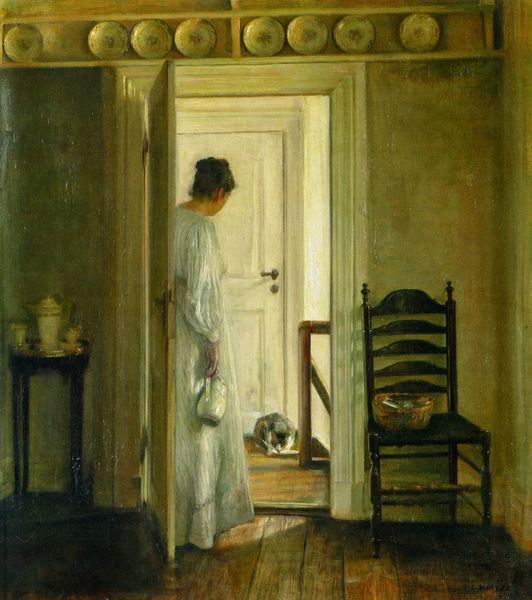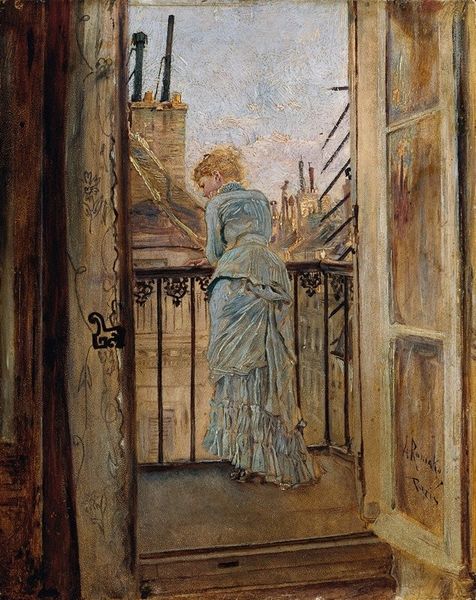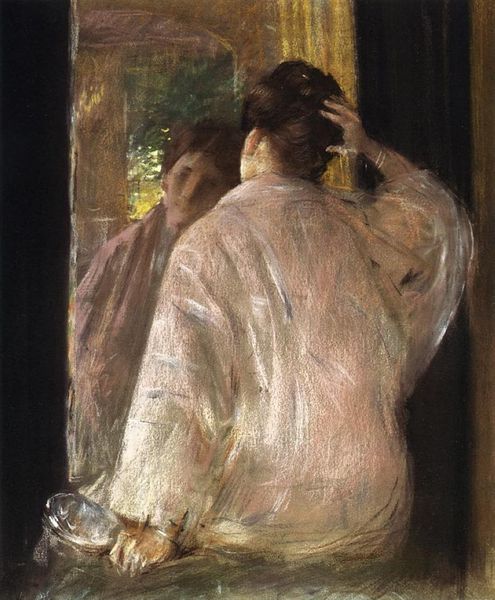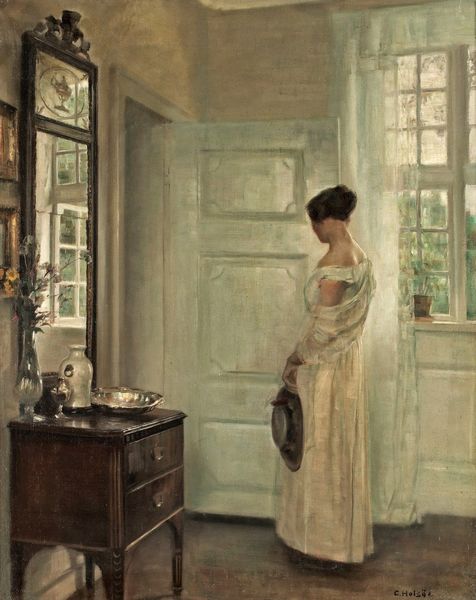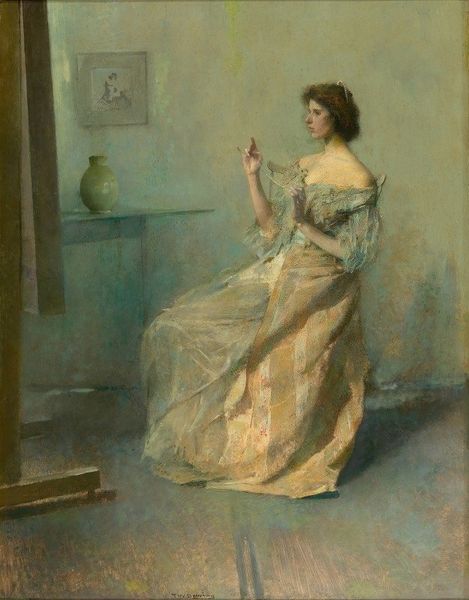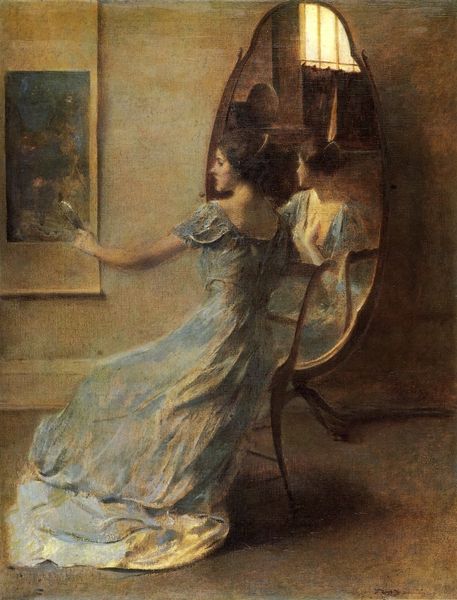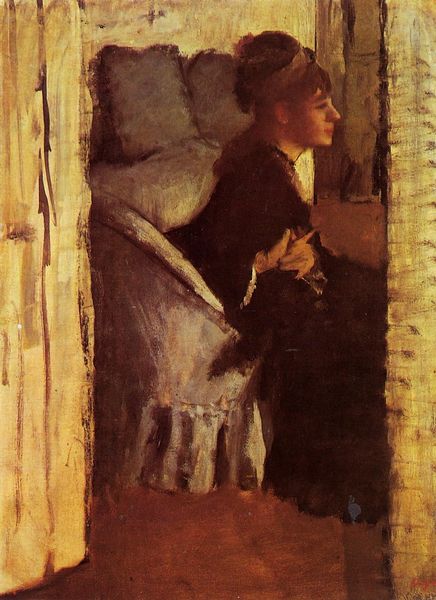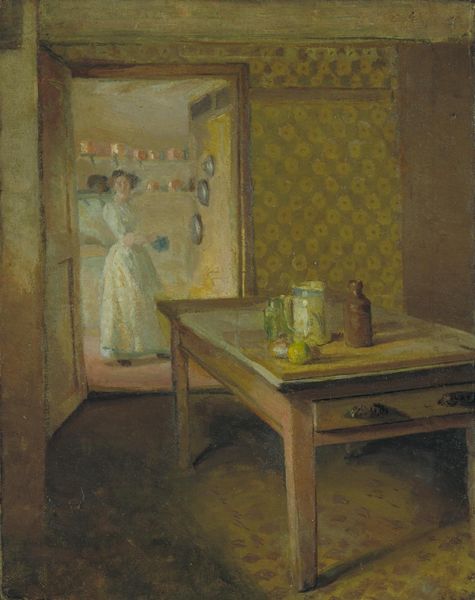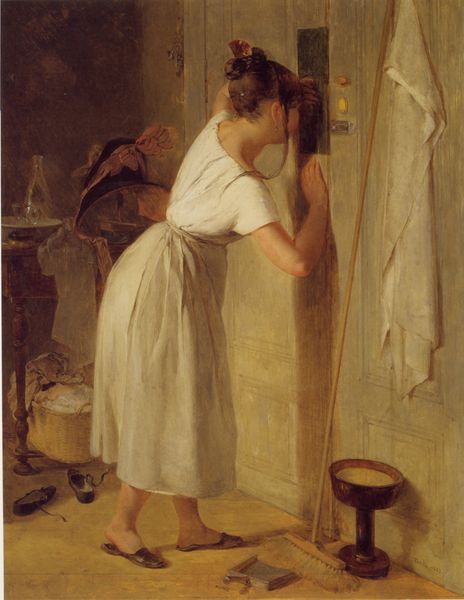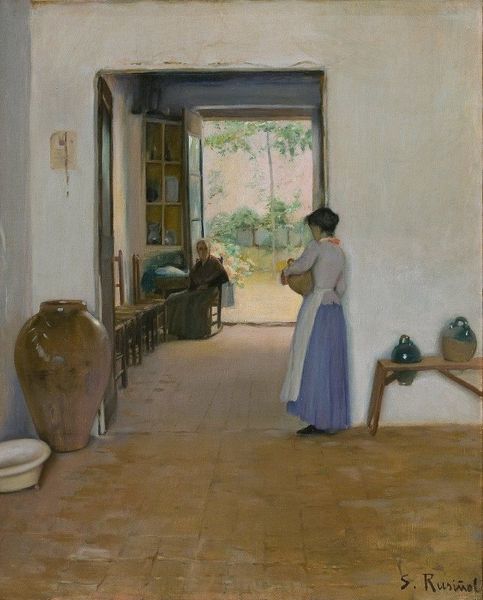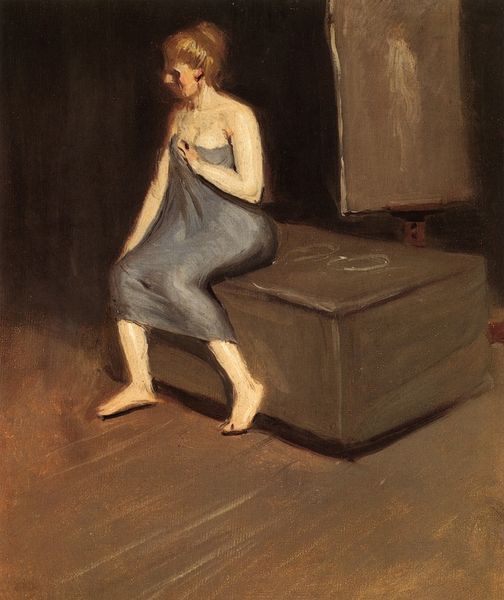
Copyright: Public Domain: Artvee
Curator: This is Ramón Casas’ “Over My Dead Body,” painted in 1893. The subject seems to be captured in a fleeting moment, almost as if unaware of the artist's or our presence. Editor: My first impression is quiet anticipation, perhaps even trepidation. The muted tones contribute to a palpable sense of intimacy. Notice how Casas’ impasto brushwork softens the whole scene and yet still the lines look smooth and clean; what’s your take on the medium? Curator: It's fascinating how Casas, working within the social constraints of his time, often depicted women in such subtly powerful poses. They appear in command of their spaces, reflective of increasing visibility for women in the public sphere in the late 19th century. Her slightly parted lips, too, suggests the silent power that can sometimes lie within domestic spaces. Editor: Yes, the tension between interiority and exteriority is intriguing. Her hand on the door, the plain white dress, all point to the domestic labor so integral yet invisible in capitalist production. You feel the weight of those doors that must shut and close on those silent laborers. The oil paint and linen elevate it into a commodity. Curator: Precisely, and it’s critical to consider where this was displayed – most likely within bourgeois homes or exclusive galleries – further reinforcing social hierarchies through art consumption. The art market as such became and continues to be a vehicle for solidifying status. Editor: Exactly. The value placed on paintings like these and how the art market manipulates what should matter about the art - like how paintings speak of lived experience of labor - shows you just how power manifests itself through consumerism. How far art and design are allowed to diverge as one, where design itself comes into play in an industrial context. Curator: It does make you wonder about what other narratives could surface, from other perspectives that didn't belong to such elite spheres... Nonetheless, in viewing Casas’ work, we catch a brief glimpse into the complex socio-political landscape that influenced artistic production in turn-of-the-century Spain. Editor: Indeed, by looking beyond the surface of oil and linen and delving into the circumstances of creation, circulation and ultimately, how value is manufactured, we reveal some of the underlying forces shaping the narrative this artwork can communicate.
Comments
No comments
Be the first to comment and join the conversation on the ultimate creative platform.
